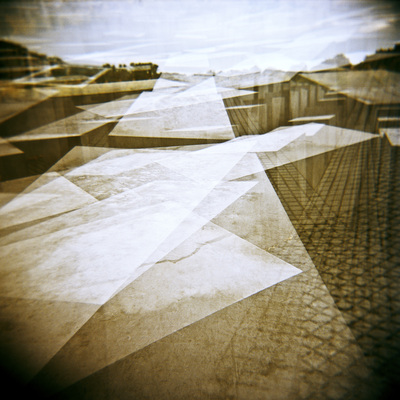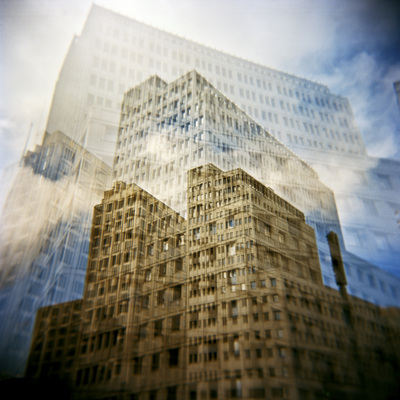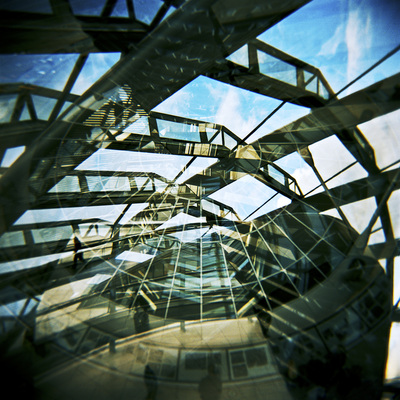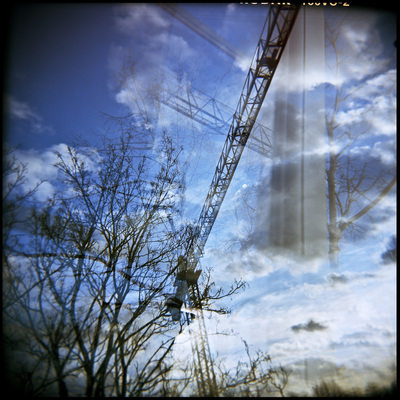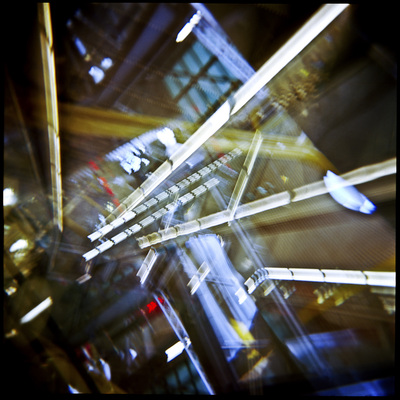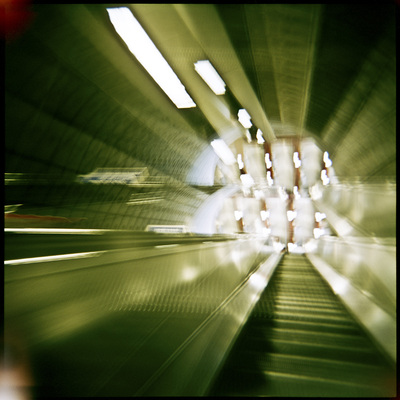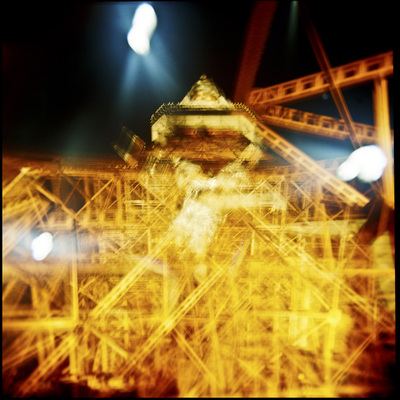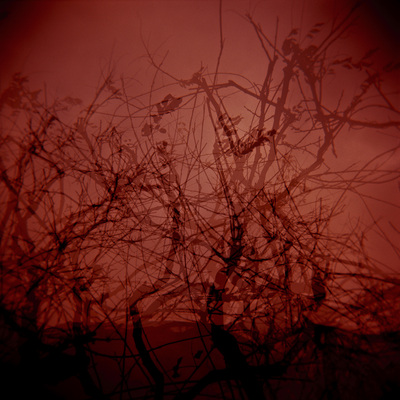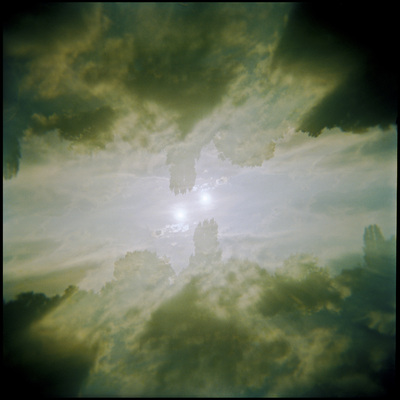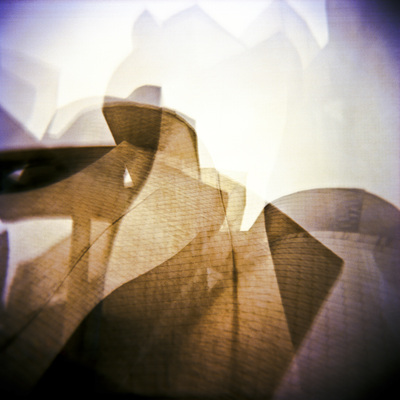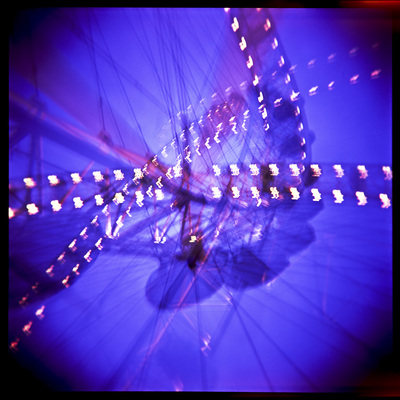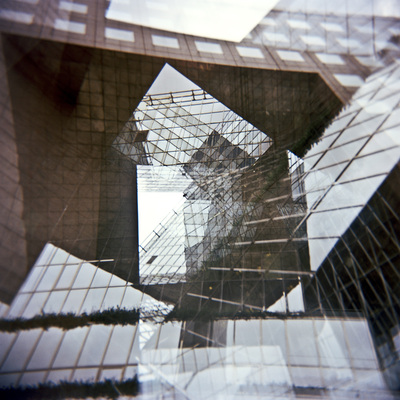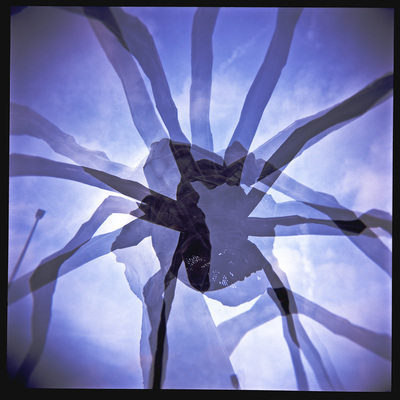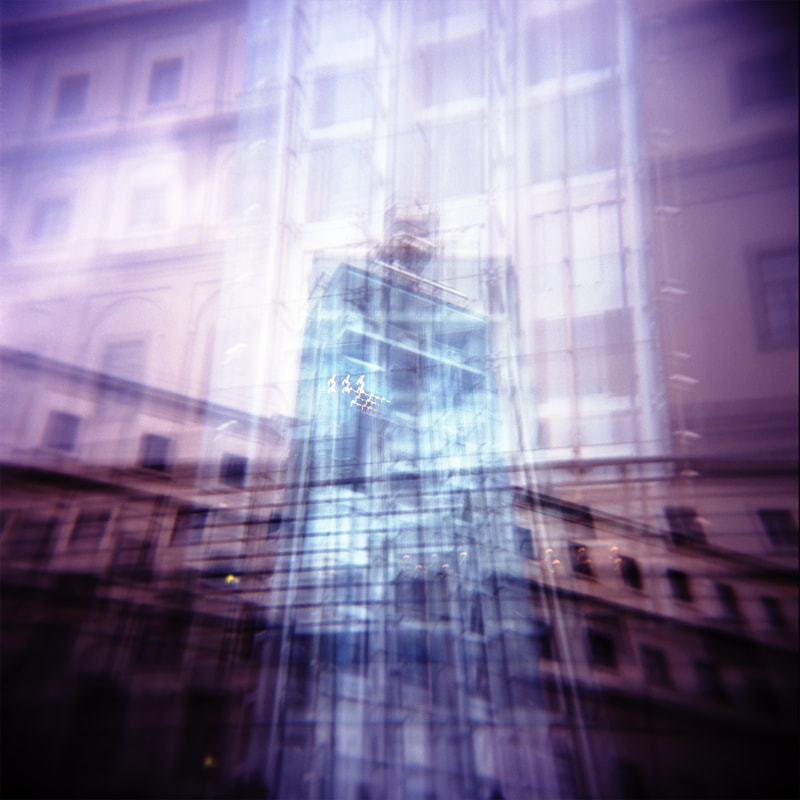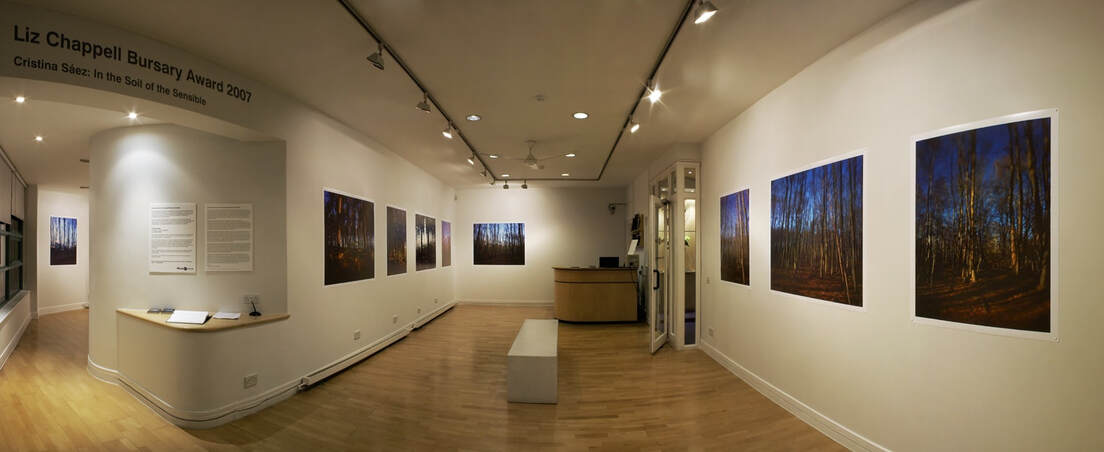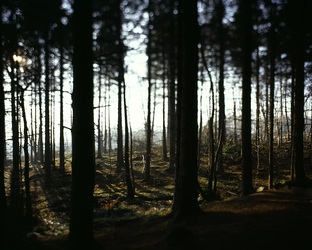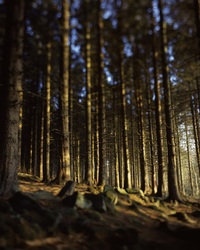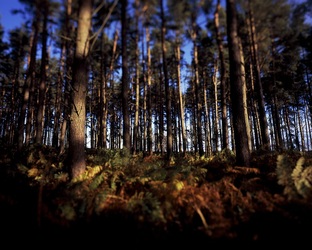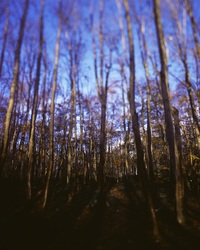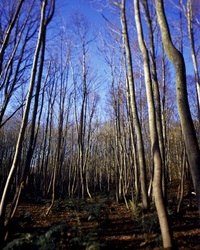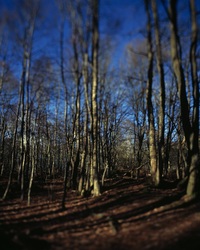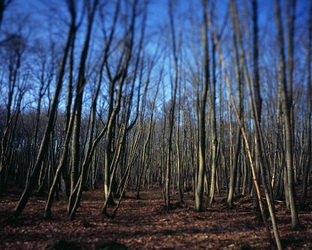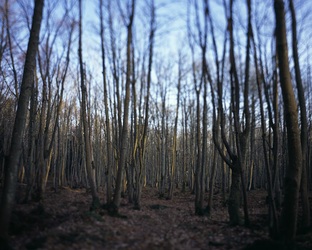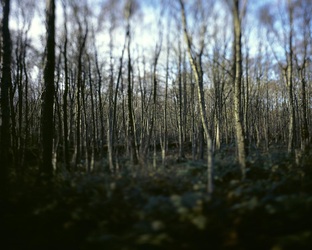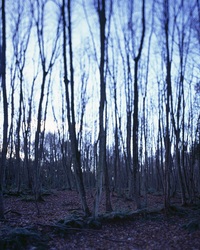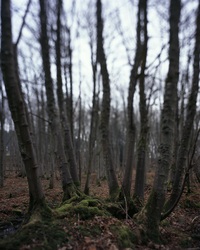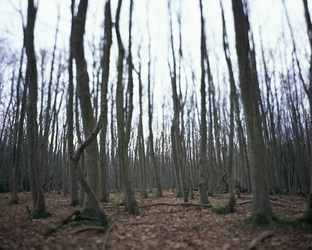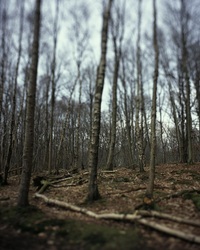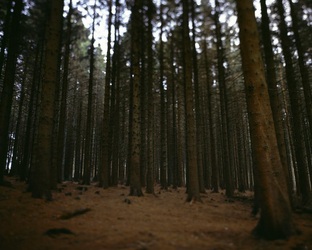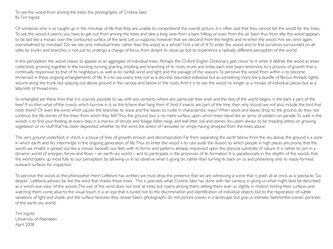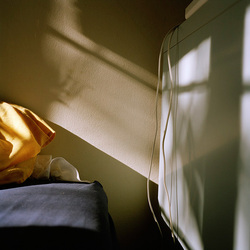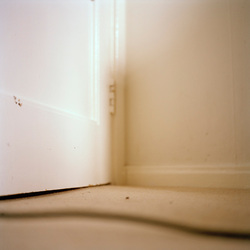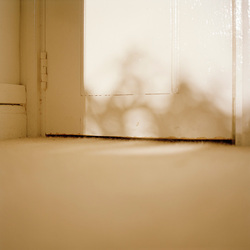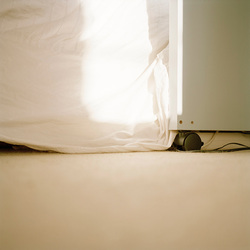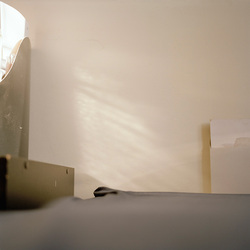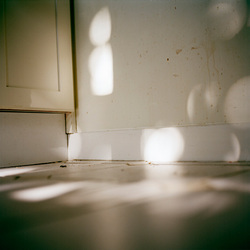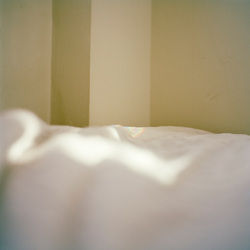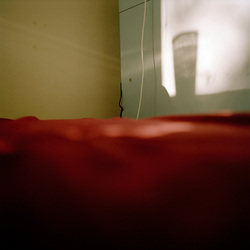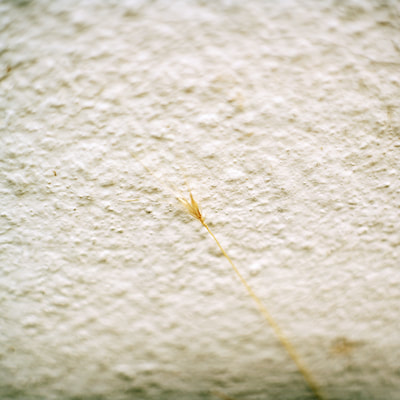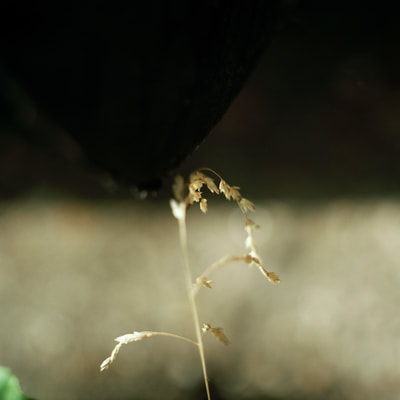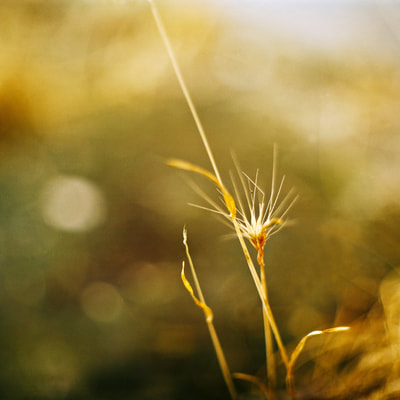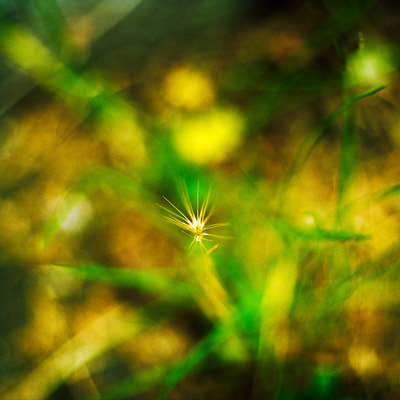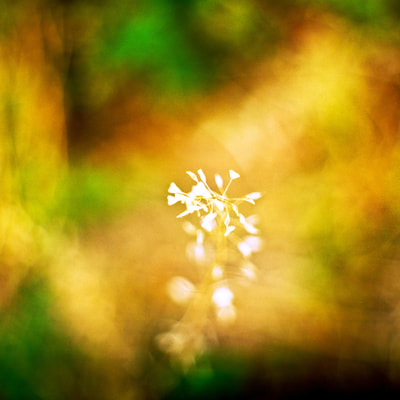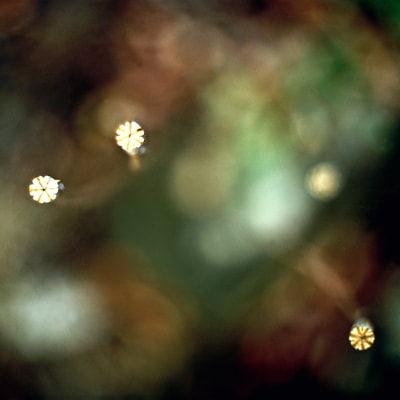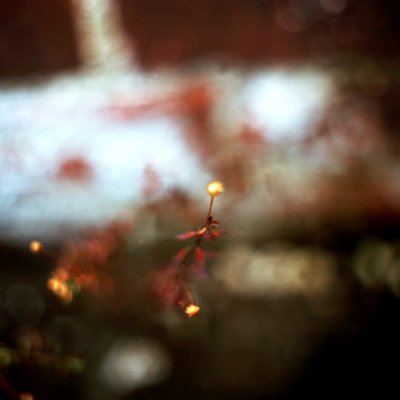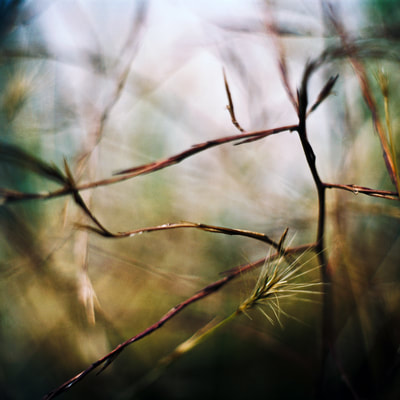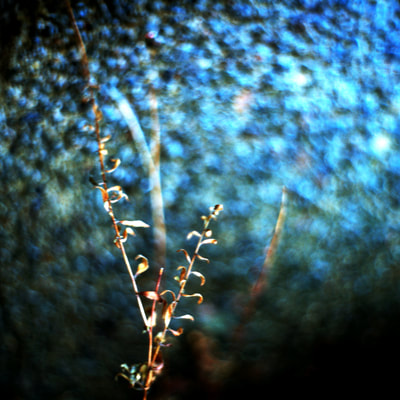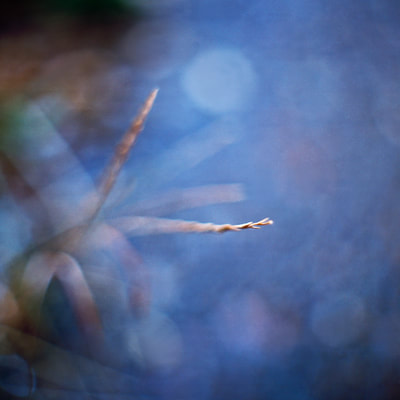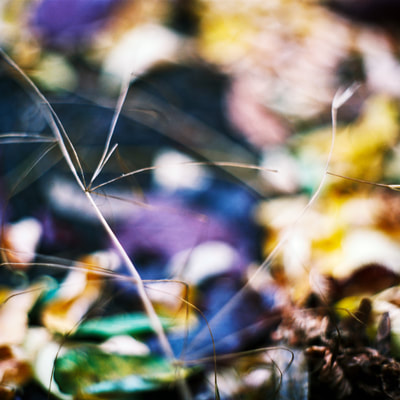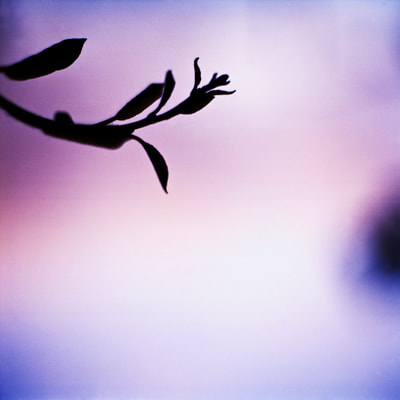MultipliCITIES (2008-2009)
MultipliCITIES is a visual investigation of urban space, nature and architecture in modern cities. Following the line of inquiry initiated by cubism, the series attempts the impossible task of representing the multiplicity of simultaneous points of view that make up urban space. In the abstract representations of urban planners and architects, space appears as a finished surface on which buildings stand immutable, perspective remains unaltered and fixed at a god’s-eye point of view. MultipliCITIES offers an alternative view of the city as seen from within the map, incorporating into the image-making process the movement of the individuals who make up the fabric of urban space with their bodies. Superimposing multiple views on one negative, and using long exposures to capture movement, these images register the changing viewpoints of the photographer as she moves through the city. What emerges is an alternative view to the tourist map, a new view of familiar subjects, which argues that the identity of a city is relational, fluid and unstable, and that urban space remains open to multiple interpretations and to contestation.
MultipliCITIES is a visual investigation of urban space, nature and architecture in modern cities. Following the line of inquiry initiated by cubism, the series attempts the impossible task of representing the multiplicity of simultaneous points of view that make up urban space. In the abstract representations of urban planners and architects, space appears as a finished surface on which buildings stand immutable, perspective remains unaltered and fixed at a god’s-eye point of view. MultipliCITIES offers an alternative view of the city as seen from within the map, incorporating into the image-making process the movement of the individuals who make up the fabric of urban space with their bodies. Superimposing multiple views on one negative, and using long exposures to capture movement, these images register the changing viewpoints of the photographer as she moves through the city. What emerges is an alternative view to the tourist map, a new view of familiar subjects, which argues that the identity of a city is relational, fluid and unstable, and that urban space remains open to multiple interpretations and to contestation.
IN THE SOIL OF THE SENSIBLE (2008)
To perceive the wood, as the philosopher Henri Lefebvre has written, we must drop the pretence that we are witnessing a scene that is given all at once, as a spectacle. ‘Go deeper’, Lefebvre advises; ‘be like the wind that shakes these trees’. This is precisely what Cristina Sáez has done with her camera, in giving us what might best be described as a ‘wind’s-eye view’ of the woods. The eye of the wind does not look at trees but roams among them, setting them ever so slightly in motion, tickling their surfaces and watching them come alive to the visual touch. It is an eye that is tuned not to the discrimination and identification of individual objects but to the registration of subtle variations of light and shade, and the surface textures they reveal. Sáez’s photographs do not picture scenes in a landscape but give us intimate, ‘behind-the-scenes’ portraits of the earth-sky world.
Prof Tim Ingold - "To see the wood from among the trees: the photography of Cristina Sáez" (extract) University of Aberdeen, April 2008
This projecy was supported by the Liz Chappel/Photofusion Bursary Award 2007
To perceive the wood, as the philosopher Henri Lefebvre has written, we must drop the pretence that we are witnessing a scene that is given all at once, as a spectacle. ‘Go deeper’, Lefebvre advises; ‘be like the wind that shakes these trees’. This is precisely what Cristina Sáez has done with her camera, in giving us what might best be described as a ‘wind’s-eye view’ of the woods. The eye of the wind does not look at trees but roams among them, setting them ever so slightly in motion, tickling their surfaces and watching them come alive to the visual touch. It is an eye that is tuned not to the discrimination and identification of individual objects but to the registration of subtle variations of light and shade, and the surface textures they reveal. Sáez’s photographs do not picture scenes in a landscape but give us intimate, ‘behind-the-scenes’ portraits of the earth-sky world.
Prof Tim Ingold - "To see the wood from among the trees: the photography of Cristina Sáez" (extract) University of Aberdeen, April 2008
This projecy was supported by the Liz Chappel/Photofusion Bursary Award 2007
LIGHTCATCHER (2008)
We are attracted to light in a primitive, instinctual way. Most people grow out of this childish fascination; others such as artists, photographers and dreamers, grow into it. This series attempts to capture the intangible: the light that comes to rest upon the surface of objects in its endless circulation across the universe. Stripping away content and narrative, the series approaches abstraction in order to bring to light the very act of perception. Searching for meaning in and beyond appearance, we are confronted with the photographic act in its pure state: the parallel universe of the image which is, in Jean Baudrillard's words, 'the point of convergence between the light from the object and the light from the gaze'.
We are attracted to light in a primitive, instinctual way. Most people grow out of this childish fascination; others such as artists, photographers and dreamers, grow into it. This series attempts to capture the intangible: the light that comes to rest upon the surface of objects in its endless circulation across the universe. Stripping away content and narrative, the series approaches abstraction in order to bring to light the very act of perception. Searching for meaning in and beyond appearance, we are confronted with the photographic act in its pure state: the parallel universe of the image which is, in Jean Baudrillard's words, 'the point of convergence between the light from the object and the light from the gaze'.
BRIXTON WEEDS: Nanoscapes of resistance (2006)
Brixton Weeds is a search for new landscapes, parallel universes within the mundane. It is an invitation to reconsider our relationship to the space we inhabit, and to involve ourselves deeply with even the most banal, the unwanted, the disregarded. In the controlled environment of the city, weeds represent impurity and disorder, the wild. They are despised as nature out of place. Re-appropriating the streets in spontaneous, creative ways, weeds evidence the resilience of a life that cannot be stopped by concrete.
Brixton Weeds is a search for new landscapes, parallel universes within the mundane. It is an invitation to reconsider our relationship to the space we inhabit, and to involve ourselves deeply with even the most banal, the unwanted, the disregarded. In the controlled environment of the city, weeds represent impurity and disorder, the wild. They are despised as nature out of place. Re-appropriating the streets in spontaneous, creative ways, weeds evidence the resilience of a life that cannot be stopped by concrete.
